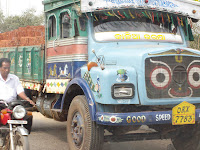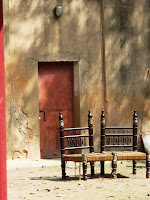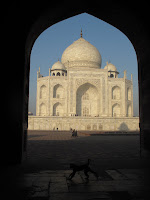Here in Lima, we did not feel direct effects of the quake, though there was a small trembler about 2 hours south of us in Ica yesterday, as well. That town was devastated by a massive earthquake in 2008 from which they are still recovering, so the locals were pretty freaked out.
For several hours following the quake, the coast of Peru, indeed the entire Pacific coast all the way up to Mexico, was on alert for possible Tsunamis from the earthquake. In the end, we did not get any. But we did have the opposite experience. Normally, we have next to no tides here in Lima. However, Saturday morning the water pulled back, as if there had been an enormous low tide. Areas that are normally under water were totally exposed. When we drove down to the beach at about 10 am, the water level had come back some, but was still very low. And there were next to no waves, in a region where surfing is big and high waves are to be expected.
Britt and Addison had meant to go surfing that morning. We had loaded the surf boards on the car and packed all the gear. But the low tide was eerie, and we decided to let nature take its course without us.
Here in Lima, the beaches are along the coast, but the city is built up on high dirt cliffs. So it was easy for us to find higher ground. Rather than venturing into the water, we headed for the Saturday morning farmer's market. This is an adventure in itself - less risky, but very interesting nonetheless, as we learn to explore the varied and exotic fruits of Peru.
 Saturday, Britt and Addison were ready to go surfing, but the effects of the Chilean earthquake dissuaded them from trying.
Saturday, Britt and Addison were ready to go surfing, but the effects of the Chilean earthquake dissuaded them from trying. So, instead, we headed upland to the organic farmers market, held every Saturday morning in Miraflores. The produce and products are very fresh and irresistable, as was true for these native potatoes (known as Peruanitas because they are lovely and dimpled like a pretty, Andean maiden), the prickly pear fruit, and two types of berries from the jungle. One tastes like currants and the other like cherries.
So, instead, we headed upland to the organic farmers market, held every Saturday morning in Miraflores. The produce and products are very fresh and irresistable, as was true for these native potatoes (known as Peruanitas because they are lovely and dimpled like a pretty, Andean maiden), the prickly pear fruit, and two types of berries from the jungle. One tastes like currants and the other like cherries. These people, wearing traditional Andean hats, were listening to some new age-style lecture at the farmer's market
These people, wearing traditional Andean hats, were listening to some new age-style lecture at the farmer's market This is a photo of the Rosa Nautica restaurant by the beach in Lima. It is pictured in its normal state (Sunday, more than 24 hours after the Chilean earthquake). In the hours following the quake, the water had pulled back so far that the sand and rocks were revealed all the way out to the point beyond the restaurant.
This is a photo of the Rosa Nautica restaurant by the beach in Lima. It is pictured in its normal state (Sunday, more than 24 hours after the Chilean earthquake). In the hours following the quake, the water had pulled back so far that the sand and rocks were revealed all the way out to the point beyond the restaurant.  This photos shows the cobbled lane that leads from the Lima neighborhood of Miraflores down to the beachfront.
This photos shows the cobbled lane that leads from the Lima neighborhood of Miraflores down to the beachfront. Here is a pedestrian path leading from the beaches up to the clifftop and neighborhood of Miraflores.
Here is a pedestrian path leading from the beaches up to the clifftop and neighborhood of Miraflores.





























































